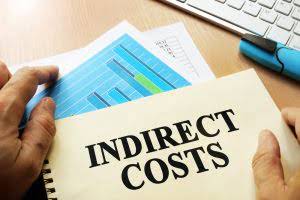How To Read A Companys Balance Sheet Leave a comment
Content
Examples of current assets include accounts receivable and prepaid expenses. If you were to sell all your assets and pay off your liabilities, the owner’s equity would be what’s left. It shows retained earnings and, if the company is publicly traded, common stock information. It’s the exact opposite of liabilities because it shows you what is yours to keep as a company.
- Quoted ratios can even exclude the current portion of the LTD.
- If the accounting equation is out of balance, that’s a sign that you’ve made a mistake in your accounting, and that you’ve lost track of some of your assets, liabilities, or equity.
- This increases the cash account by $6,000 and decreases the receivables account by $6,000.
- Financing through debt shows as a liability, while financing through issuing equity shares appears in shareholders’ equity.
- Understand why company financial statements are reported and their importance for internal and external users.
- Accounts Payables, or AP, is the amount a company owes suppliers for items or services purchased on credit.
However, it’s not so simple as just adding all of these things up. Owner’s or stockholders’ equity also reports the amounts invested into the company by the owners plus the cumulative net income of the company that has not been withdrawn or distributed to the owners. As sources (along with owner’s or stockholders’ equity) of the company’s assets. Like revenue accounts, expense accounts are temporary accounts that collect data for one accounting period and are reset to zero at the beginning of the next accounting period. Most accounting programs perform this task automatically. Even though no one is really writing down debits and credits in ledgers anymore, you’re still following the same process. Every time you purchase or sell something, you need to classify that transaction, and that classification will impact two accounts on your chart of accounts .
Keeping The Accounting Equation In Balance
The accounting equation is important because it can give you a clear picture of your business’s financial situation. It is the standard for financial reporting, and it is the basis for double-entry accounting. Without the balance sheet equation, you cannot accurately read your balance sheet or understand your financial statements. Assets are also grouped according to either their life span or liquidity – the speed at which they can be converted into cash. Current assets are items that are completely consumed, sold, or converted into cash in 12 months or less.
They help you understand where that money is at any given point in time, and help ensure you haven’t made any mistakes recording your transactions. The type of equity that most people are familiar with is “stock”—i.e. How much of a company someone owns, in the form of shares. Return on Invested Capital – ROIC – is a profitability or performance measure of the return earned by those who provide capital, namely, the firm’s bondholders and stockholders. A company’s ROIC is often compared to its WACC to determine whether the company is creating or destroying value.
Liabilities
Accounting is considered the language of business because its concepts are time-tested and standardized. Even if you do not utilize the services of a certified public accountant, you or your bookkeeper can adopt certain generally accepted accounting principles to develop financial statements.
Examples of current liabilities may include accounts payable and customer deposits. The income and retained earnings of the accounting equation is also an essential component in computing, understanding, https://www.bookstime.com/ and analyzing a firm’s income statement. This statement reflects profits and losses that are themselves determined by the calculations that make up the basic accounting equation.

Management obtains any information it wants about the company’s operations by requesting special-purpose reports. It uses this information to make difficult decisions, such as which employees to lay off and when to expand operations.
Anything that a business owes to someone is a liability – bank loans, unpaid bills, mortgages, IOUs, etc. In simple terms, if your company has liabilities, it means whatever is liable needs to be repaid.
Companies will generally disclose what equivalents it includes in the footnotes to the balance sheet. Total all liabilities, which should be a separate listing on the balance sheet. Think of retained earnings as savings, since it represents the total profits that have been saved and put aside (or “retained”) for future use. Debt is a liability, whether it is a long-term loan or a bill that is due to be paid. Full BioSuzanne is a researcher, writer, and fact-checker. She holds a Bachelor of Science in Finance degree from Bridgewater State University and has worked on print content for business owners, national brands, and major publications.
Example Balance Sheet
Thus, the asset and equity sides of the transaction are equal. Accounts payable include all goods and services billed to the company by suppliers that have not yet been paid. Accrued liabilities are for goods and services that have been provided to the company, but for which no supplier invoice has yet been received. Sole proprietors, for example, their equity accounts are usually called Owner’s Equity for money put into the business, and Owner’s Draw for money given back to the owner. But, that does not mean you have to be an accountant to understand the basics. Part of the basics is looking at how you pay for your assets—financed with debt or paid for with capital. Liabilities mean everything that the company owes to other people.
- Balance sheets are typically prepared and distributed monthly or quarterly depending on the governing laws and company policies.
- This statement reflects profits and losses that are themselves determined by the calculations that make up the basic accounting equation.
- It focuses on the assets, liabilities, and equity of a company’s working capital.
- Of course, fixed assets will vary considerably and depend on the business type , size, and market.
- The balance sheet is also known as the statement of financial position and it reflects the accounting equation.
- The balance sheet is a very important financial statement for many reasons.
A company’s working capital is the difference between its current assets and current liabilities. Managing short-term debt and having adequate working capital is vital to a company’s long-term success.
They help a business manufacture goods or provide services, now and in the future. If the expanded accounting equation is not equal on both sides, your financial reports are inaccurate. This system is called double-entry accounting and it refers to the fact that every entry affects two different accounting categories. Every purchase becomes a new asset and a liability, every sale removes an asset but increases your equity, etc. The ‘accounting equation’ is an equation used to determine the financial health of your business. Long-term liabilities are typically mortgages or loans used to purchase or maintain fixed assets, and are paid off in years instead of months.
Using Assets, Liabilities, And Equity To Check Your Businesss Financial Health
Each transaction in a double-entry accounting system has two sides. The first side of the transaction is called the debit side of the transaction.

You’ve probably heard at least some of these terms before. Below, we’ll explore what exactly goes on a balance sheet. Learn the definition and purpose of accounting in business.
Generally, sales growth, whether rapid or slow, dictates a larger asset base – higher levels of inventory, receivables, and fixed assets . As a company’s assets grow, its liabilities and/or equity also tends to grow in order for its financial position to stay in balance. How assets are supported, or financed, by a corresponding growth in payables, debt liabilities, and equity reveals a lot about a company’s financial health. The balance sheet shows the accounting equation in balance. A company’s assets must equal their liabilities plus shareholders’ equity.
The Importance Of The Balance Sheet
Jessica is a business-to-business content strategist and consultant with 24 years of experience in the restaurant and hospitality industry. These are recorded on the right side of the balance sheet. We use money to purchase goods and services regularly, but in this lesson, we will take a closer look at money. Learn about the functions of money, which include medium of exchange, and the characteristics of money, which include durability and transportability.
As long as an organization follows the accounting equation, it can report any type of transaction, even if it is fraudulent. While the purpose of the P&L is to show how your business performed over a specific time period, the purpose of the balance sheet is to show the financial position of your business on any given day.
AccountingA Complete Guide to The Double-Declining Balance Method of Depreciation A simple guide to depreciating assets using the double-declining balance method. Understand how to calculate it and how it’s different from the straight-line… Based on the example mentioned above, this is what your business’ balance sheet will look like. Since assets are the most important element, this is the equation your business is most likely to use. Assets can include tangible items like desks, computers, or lamps.

This article shows you how to read and make a balance sheet. FreshBooks also has accounting software that generates a balance sheet automatically. Fixed assets are physical items that last over a year and have financial value to a company, such as computer equipment and tools.
What Is The Balance Sheet?
The balance sheet should also be reviewed periodically to make sure a business’s liabilities are not growing faster than its assets. This ratio measures a company’s ability to pay short-term and long-term debts. Asset accounts are classified as either short term, or long term. A short-term asset means that the asset will be used, sold, or liquidated to pay for liabilities within a year; and a long-term asset won’t be used or sold within the year. Understanding the difference between your assets, liabilities, and equity and how they all balance out is critical to assess the financial health of your business. Having a good understanding of the account types is necessary for anyone creating accounts, posting transactions and journal entries, or reading financial reports.
Video Explanation Of The Balance Sheet
A business incurs many of its liabilities by purchasing items on credit to fund the business operations. The balance sheet summarizes a business’s assets, liabilities, and shareholders ‘ equity. Compare the current reporting period with previous ones using a percent change analysis. Calculating financial ratios and trends can help you identify potential financial problems that may not be obvious. With balance sheet data, you can evaluate assets = liabilities + equity factors such as your ability to meet financial obligations and how effectively you use credit to finance your operations . So, if you want to effectively track your business’ financial health and improve it, make sure you are armed with enough information about assets and liabilities, and equity too. Every business works with financial statements that give them a precise analysis of their monthly and annual profits or losses.
Of course, fixed assets will vary considerably and depend on the business type , size, and market. The balance sheet contains statements of assets, liabilities, and shareholders’ equity.
Understanding the different types of financial documents and the information each contains helps you better understand your financial position and make more informed decisions about your practice. This article is the first in a series designed to assist you with making sense of your practice’s financial statements. It also keeps track of your business’ assets, liabilities, and equity and gives you the data at any given point in time.
Assets are a company’s resources—things the company owns. Examples of assets include cash, accounts receivable, inventory, prepaid insurance, investments, land, buildings, equipment, and goodwill.
